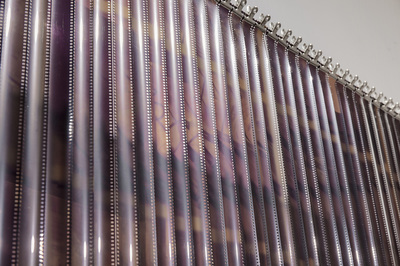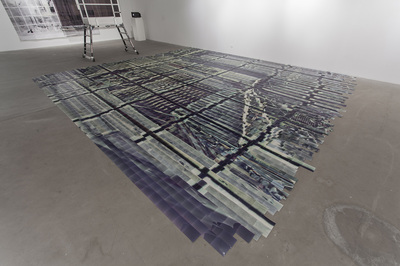Luke CHING: For now we see through a window, dimly 程展緯《小窗大景》
|
|
Luke CHING For now we see through a window, dimly 30 September – 5 November 2016 Gallery EXIT is pleased to announce “For now we see through a window, dimly”, a solo exhibition of photographic work by Luke Ching. The exhibition will open on 30 September 2016 and remain on view through 5 November. An opening reception will be held on Friday, 30 September from 6pm until 8pm. The artist will be present. Between 1998-2006, Ching recorded various views outside the window by transforming individual apartments into large pinhole cameras. The photos were taken mostly at historically significant places in Hong Kong and in other countries under various circumstances. This exhibition presents a selection of scenes made in Hong Kong, portraying the cityscape and living details of a bygone era. Physically and metaphorically, a minuscule hole became the sole window for each photo to occur. The fixed apartment became a make-shift camera obscura. The artist situated himself within the dark room, observing upside down projections of the world without. It was this cinematic, dreamlike experience that captivated Ching to continue the series. Images were formed between sight and touch, triggering new observations of pre-existing matters. Their implication on urban renewal was a subsequent subject. For the past two decades, Ching has established a recognisable body of conceptual work that draws from social issues and bureaucratic politics. The pinhole series speaks a photographic language that is uncommon in his practice, yet they share a documentary nature for social commentary to take place. It offers insight into the formation of Ching’s political sensibility through life experiences. Initiating the work as a young artist, by utilising sporadically available locations and barely affordable resources, it developed into an archive of personal encounters and historical changes. Some views include significant cultural buildings of questionable aesthetics, “Three Pacific Place” that symbolises the gentrification of Wan Chai, “Fung Yi Street” in To Kwa Wan, and Hong Kong Island’s last squatter village in “Pok Fu Lam”. The photographs mark volumes of controversies, memories, and ends. They also suggest the destiny of the analogue photography and that of one-hour photo development shops. All prompt notice that assets and material possessions started to have the tendency of being temporary and disposable since the 1990’s. The making of these images was a process of movements and activities. The positioning of light-sensitive paper or film onto walls, the curious and patient waiting, the attentive observations, the on-site tests, the unlimited bodily and mental possibilities within pitch dark spaces of solitude which ranged from thirty minutes to a day. Due to long exposures we see an absence of people, but there are hints of the artist’s presence in pin and tape marks, and other planned and unplanned traces. Manual action continues today, when Ching unfolds these photographs from his archive, some of which he is seeing for himself, the very first time. |



















